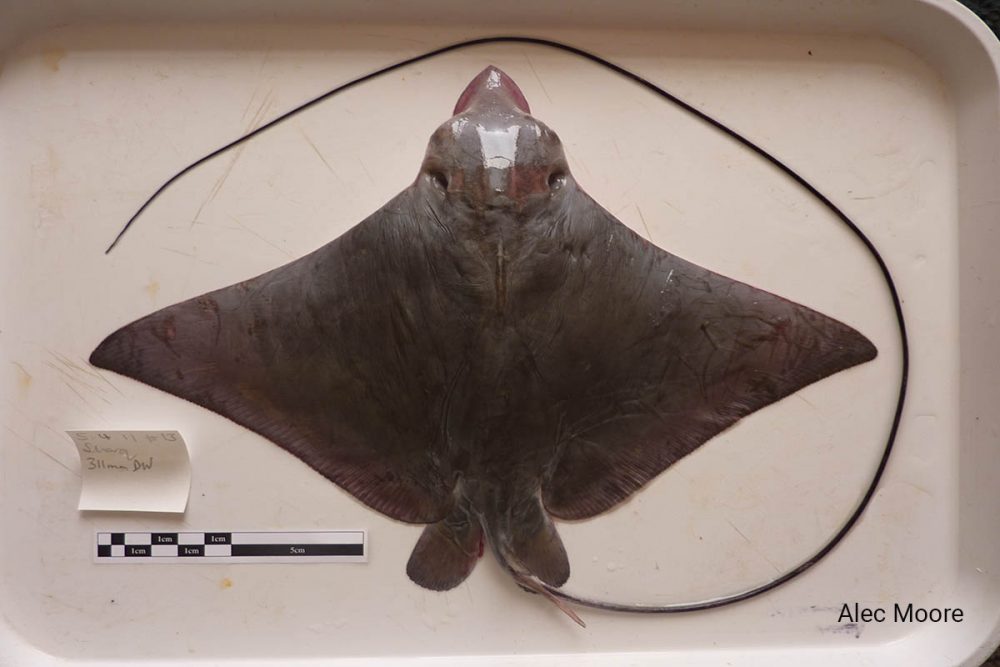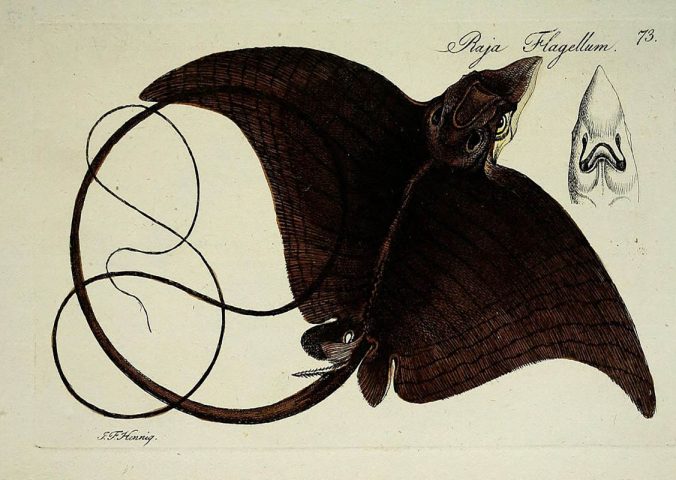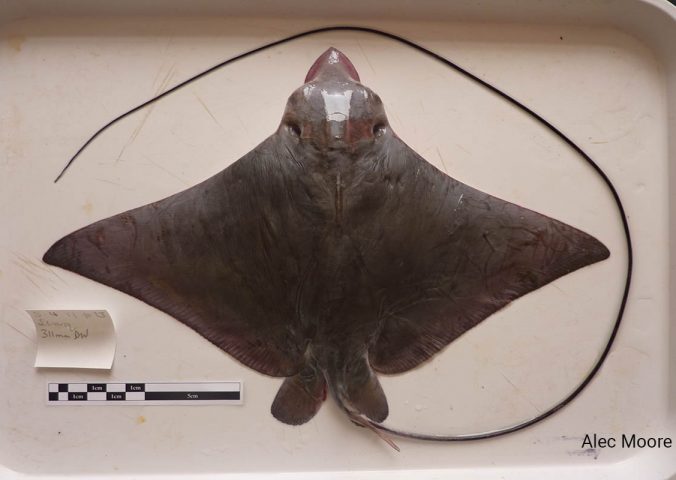About
The longhead eagle ray is an uncommon species, of which little is known. This eagle ray has a comparatively long, beak-like snout, and a whip-like tail, three times as long as its body.
Adult females attain larger sizes than males. Very little is known of its reproductive biology, however, it is thought to be similar to other eagle rays, and have traits such as small litter size, which could be limiting for population recovery. Experts assume this species reproduces by histotrophy viviparity, meaning embryos are supplied with nutrients from the yolk inside the female’s body as well as from other fluids within the female’s oviduct, the female then gives birth to live young.
Records from early 20th century when inshore fisheries were not as widespread and intense, suggest that the longhead eagle ray is a naturally scarce species. Being a rare species, there is little data on bycatch, but it is believed the longhead eagle ray’s preference for inshore coastal habitats make it highly vulnerable to be caught as bycatch due to the increasingly high fishing pressure in these areas. When this species is caught as bycatch it is either discarded or sold as a low value item in Indonesia and the Persian/Arabian Gulf. Most of the individuals in fish markets are caught with gillnets deployed in areas with estuarine habitats. Based on landing data, this eagle ray appears to be more abundant in the Red Sea than the Indo-Pacific, comprising between 4% – 9% of rays captured in Kuwait, compared with 0.1%-1% in Indonesia and India. Besides inshore fisheries, the species’ habitats are subjected to a myriad of local and global threats, thereby making habitat degradation also an important issue for the species.
In 2013, White and Moore (2013) proposed that the Northwest Indo-Pacific individuals (Japan and Korea) to be a yet undescribed species, recommending a thorough examination of the China specimens as they could also represent the undescribed species. There were clear differences in the size and abundance. While the maximum disc width (DW) reported for the Red Sea and Southwest Indo-Pacific is less than 900 mm with individuals caught very rarely; in Japan, the maximum DW reaches 1,500 mm in females. Landing data from the Northwest Indo-Pacific suggests the species to be common and abundant, with predator control programmes implemented in Japan since 2001. Recently, the species has been named as Aetobatus narutoibei or Naru eagle ray, leaving the longhead eagle ray with a narrower distribution range.
Experts have proposed careful monitoring of catches should be a priority and management plans should be developed and implemented.
- Order: Myliobatiformes
- Family: Dasyatidae
- Population: Unknown
- Trend: decreasing
- Size: 233mm – 900mm (?)
EDGE Score
Distribution
Western Indo-Pacific. Its range includes the Red Sea, India, Indonesia and the South China Sea.
Habitat and Ecology
The longhead eagle ray displays a strong association to estuary habitats with brackish waters in tropical and subtropical coasts. No information on connectivity between populations exist, making the species vulnerable to local extinctions. Local site fidelity, as well as local and regional movements are unknown.


